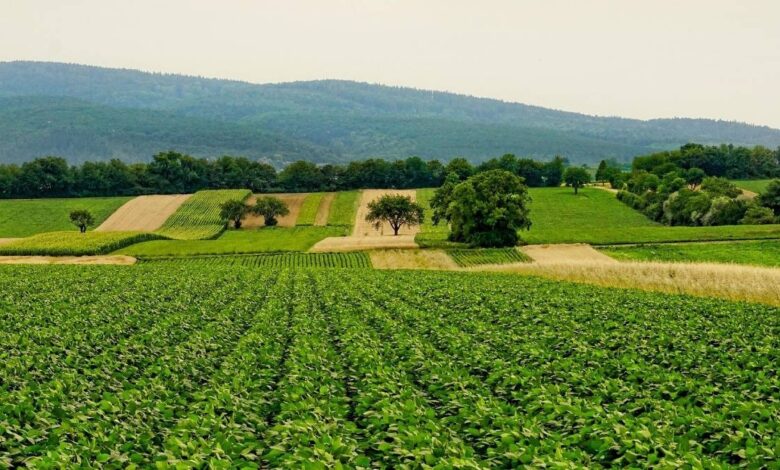Climate change has changed the agricultural model in Uttarakhand, a major decline in potato cultivation, increased production of pulses

Due to climate change, there is a change in agriculture in Uttarakhand. In a decade, the area of food grains and oilseeds has a decline in the area and a decline in potato yields in the area. At the same time, 27 percent of cultivated land under food grains and oilseeds in the state mountains is also destroyed. Also, yields have been reduced by 15 percent. The biggest decline in potato production came in Almora and Rudraprayag. Due to the problem of climate change, in Uttarakhand, wheat, rice and millet crops are declining, pulses and maize are the weather-resistant crops. At the same time, there is an area of cultivation of pulses, such as Gram and Ella, and an increase in yields.
Potato yields declined, large signal
Potato, known as ‘King of Vegetable’, is facing many climate change. Over the last five years, its yield declined to 1.07 lakh metric tonnes in 2023-24, which fell 70.82 per cent against 3.67 lakh metric tonnes. At the same time, there is a decrease in this area. In the year 2020-21 it was 26,867 hectares, and in 2022–23 it came to 17 and 083 hectares, which means it was down 36.4 percent.
The country was produced in Uttarakhand by 0.19 % of the country, but it was the highest growing crop in the state and the highest cultivation. Anil Kumar, a scientist in Udhmsing Nagar, says, “Potato cultivation in the mountains is based on rain and the rain is becoming irregular. There is previous snowfall, and now it has affected the potatoes.
Dry land, Double Challenge of Farmers
Jogendra Bisht, president of Lok Chetna Manch, says, ‘The cultivation of potatoes in the mountains is completely dependent on the rain and is now very uncertain about the rain in Uttarakhand. For this reason, there is now a shortage of moisture for agriculture. The temperature is rising from the top and the evaporation has intensified. Overall, climate change contributes to this. Typically, the potatoes are planted at the beginning of March and cut into the mountains to May-June. On the grounds, they are planted in October-November and cut until January.
Earlier, there was snow 2-3 times between October and December. Now the lack of rainfall, the lack of snowfall between October and January, the rising temperature and the hail have adversely affected the cultivation of potatoes. Apart from this, it destroys farms on wild boar nights. All these things are against the potato.
How and how much the weather changed
According to India’s weather disaster atlas, Uttarakhand had a severe weather for 94 days in 2023. It affected 44,882 hectares of farmland. The effect of climate change is seen in mountainous areas than grounds. The temperature here is an average of 0.02 degrees Celsius every year. Increasing temperatures, irregular rains and more serious weather events have disrupted traditional crop models.
The cultivated boom of spices
Turmeric cultivation in the state has increased by 35 percent. In the last few years, spices have increased by 50 percent. The yield increased by 10.5 percent. Turmeric yield increased by 122 per cent and chilli 21 per cent. These crops are suitable for warm and humid conditions and can withstand the soil. According to a new report of weather trends, a company that monitor the impact on the environment is giving a different shape to the Uttarakhand’s agricultural landscape due to the shortage of water and heat in the mountains.
The cultivation of pulses has increased
According to the report, there has been a major change in the cultivation of hilly areas in Uttarakhand over the past decade. Total cultivated land declined by 27.2 %. Total yield was reduced by 15.2 percent. The hill districts of Uttarakhand are now moving from traditional crops and moving towards weather -sneezing crops. The area of the main crops such as wheat, rice and potatoes and yield is greatly deteriorated. At the same time, according to the changing season, pulses and corn are emerging. Ji tags such as Ramdana, Ella, Kulati and Black Corn are now increasing.
Local pulses like Hill Vidar, Urad, Gram, Bhat and Rajma are now the basis for the weather-Flexible future. Due to low water, low input and high nutritional value, these crops now become the backbone of new farm models. At the same time, oilseed crops such as Lahi, mustard, Toria and soybean are still in small, but they are growing. However, their average yield is still low.
The idea of converted farmers, the government is helping
Farmer Jogendra Bisht said the ‘traditional’ Baranaja multi-crop system in the state has now ended. Farmers are now receiving new multi -quant strategies with millet and pulses. Pulses, especially soybeans, gram, can be grown in dry land and non -rethed areas, becoming a selection of farmers. At the same time, weather weather conditions are a good mold compared to rice and wheat, as rice and wheat demand more water. He said rice and wheat cultivation is now difficult due to lack of water and decreased soil. In such a situation, crops such as black soybean and kulathi are becoming choices.
Also read-

